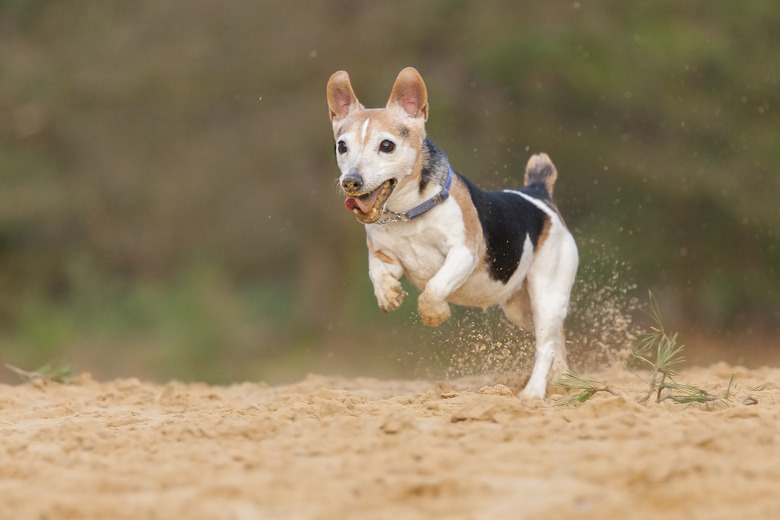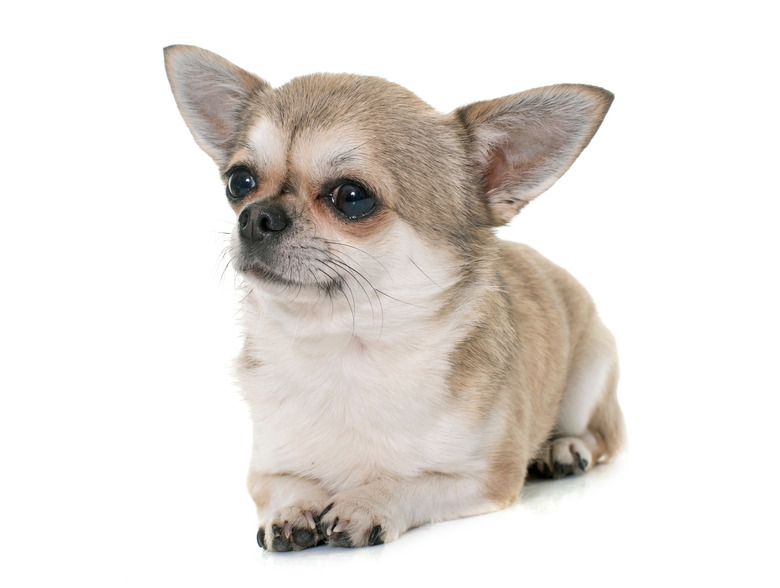Bone Deformity And Dwarfism In Dogs
Deep within the complex, threadlike chain of nucleotides that make up a dog's DNA, strange genetic mutations in the growth factor receptor gene can cause disorders such as bone deformity and dwarfism. These biological instructions gone awry are inherited from both a dog's mother and father. While selectively breeding for dwarfism is considered normal in many breeds, other forms of dwarfism and bone deformity are abnormal, such as pituitary dwarfism syndrome.
What is pituitary dwarfism in dogs? What breeds does it affect?
What is pituitary dwarfism in dogs? What breeds does it affect?
Pituitary dwarfism syndrome or juvenile panhypopituitarism is abnormal dwarfism that occurs in breeds such as the German shepherd dog and Carnelian bear dog, and to a lesser extent, Weimaraners, Labrador retrievers, spitz, and miniature pinschers. Victims are visibly striking in their small size, appearing to be puppies even in adulthood.
What causes pituitary dwarfism syndrome in dogs?
What causes pituitary dwarfism syndrome in dogs?
Pituitary dwarfism is the result of deficiencies in the amount of growth hormone (GH) secreted by the pituitary gland. It can be an inherited trait that exists in a recessive gene where the puppy must inherit one deformed gene from each parent. It can also occur if the pituitary gland does not develop normally, or is damaged by tumors, cysts, and other growths, or disease in the gland.
Symptoms of pituitary dwarfism in dogs.
Symptoms of pituitary dwarfism in dogs.
Appearing to be normal at birth, puppies born with pituitary dwarfism soon stop growing after about three to four months. Symptoms of pituitary dwarfism include:
- Short legs which are caused by the delayed closure of developing growth plates in the long bones of the legs, apparent usually by five or six months of age.
- Puppy teeth don't fall out when they should, delaying the eruption of adult teeth.
- Retention of his soft, woolly puppy coat or alopecia that develops gradually leading to patches of symmetrical hair loss.
- Skin abnormalities such as hyperpigmentation/darkening, wrinkling, scaling, and thinning of the skin.
- Genitals do not develop normally resulting in testicular atrophy in males and absence of heat cycles in bitches and sterility in both sexes.
- Aggression, fear biting, and other abnormal behaviors.
- Heart problems.
- Megaesophagus, the food regurgitation disease, in which the esophagus stretches and malfunctions, failing to contract. Food sometimes doesn't reach the stomach, building up in the esophagus and causing the dog to regurgitate. Complications are potentially dangerous, life-threatening aspiration pneumonia when the dog inhales during regurgitation.
- Shortened lifespan.
Diagnosis of pituitary dwarfism and treatment.
Diagnosis of pituitary dwarfism and treatment.
If you see any of the physical signs or clinical symptoms of pituitary dwarfism in your dog, your veterinarian will run a series of tests to rule out any other disorders, illnesses, or secondary conditions. A urinalysis, biochemical profiles, and blood tests that measure the growth hormone in your dog's blood will confirm a diagnosis of pituitary dwarfism syndrome. Thyroid and adrenal gland problems are common in dogs with impaired pituitary function so normal hormones will also be checked to make sure other endocrine issues are not present.
Treating and living with pituitary dwarfism.
Treating and living with pituitary dwarfism.
Because pituitary dwarfism is hereditary, it's advisable to de-sex a dog with the condition. Breeders often euthanize dogs they will not be able to sell. Treatment for the disorder involves several injections of growth hormone several times a week for months. There is a strong possibility for the malfunction of the thyroid so often thyroid hormone replacement therapy is required. If the adrenal gland is compromised, cortisone replacement therapy is indicated.
RELATED: Types Of Dogs With Short Legs
Besides all the physical challenges of pituitary dwarfism, dogs with the disorder may become overly anxious or even aggressive. Once you fall in love with a tiny dwarf dog, you are committed to giving her the best quality of life possible. One couple in England found that neutering their male German shepherd dwarf dog Tiger a little later than usual boosted his natural testosterone. In Tiger's case, fish oil tablets daily and the growth hormone thyroxine also helped. Dogs with pituitary dwarfism often do not live beyond the age of five.
What is osteochondrodysplasia and selective breeding for dwarfism?
What is osteochondrodysplasia and selective breeding for dwarfism?
In a relentless quest to redesign everything, even nature, humans have selectively bred for dwarfism (osteochondrodysplasia) in some dog breeds such as English bulldogs for centuries, with sad consequences for the breed. From malformed skulls and abnormal nasal passageways to reproductive problems and hip dysplasia, these severe skeletal defects can cause pain and discomfort during puppyhood and into adulthood, and even early death. Advanced surgical techniques, pain medications, and hormone replacement therapy are options for living with skeletal deformities in those dogs selectively bred for dwarfism as complications arise, and those dogs where these deformities are not bred-in "traits."
MORE: Canine Endocrine Diseases
Some of the complications of osteochondrodysplasia or skeletal dwarfism include arthritis, arthrosis, retinal dysplasia, and back pain. If you have a purebred dog where chondrodysplasia is considered normal, such as corgis or basset hounds, you won't be surprised by your dog's build, but skeletal deformities affect breeds where it is abnormal. Breeds in which osteochondrodysplasia occurs are:
- English pointers
- Beagles
- Shih-Tzu
- Japanese spaniels
- Pekingese
- Pugs
- Boston terriers
- German shepherds
- Bulldogs
- Norwegian elkhounds
- Scottish deerhounds
- Basset hounds
- Labrador retrievers
- The Great Pyrenees
- Alaskan Malamutes
- samoyeds
- Cocker spaniels
- Scottish terriers
The symptoms of skeletal dwarfism.
The symptoms of skeletal dwarfism.
The symptoms of skeletal dwarfism vary, but most are noticeably visible, and most people will recognize these symptoms in the purebred dogs which are selectively bred to produce them:
- Short, often stubby legs.
- Disproportionately large head.
- Long body.
- Disproportionately small nose.
- Bulging eyes.
- Underbite, usually with crooked teeth due to the shorter jaw.
- Feet splay outward.
- Tongue sticks out.
- Slow growth.
- Bowed front legs.
- Deformed bones.
- Snoring and labored breathing due to short snout.
- Retinal dysplasia which results in reduced vision and consequently bumping into things.
- Slow growth.
- Joint inflammation.
- Curved spine.
Always check with your veterinarian before changing your pet's diet, medication, or physical activity routines. This information is not a substitute for a vet's opinion.
References
- Pet Wave:Symptoms of Dwarfism in Dogs
- Wag Walking: Bone Deformity and Dwarfism in Dogs
- Vice: Tiger is a Three-Year-Old German Shepherd with Dwarfism
- I Heart Dogs: 10 True Dwarf Dog Breeds
- Vet Info: Symptoms of Pituitary Dwarfism in Dogs
- Dogcare.DailyPuppy: Canine Dwarfism
- Your Purebred Puppy: Bulldogs
- Wag Walking: What is Osteochondrodysplasia (Skeletal Dwarfism)? Read more at: https://wagwalking.com/condition/osteochondrodysplasia-skeletal-dwarfism

